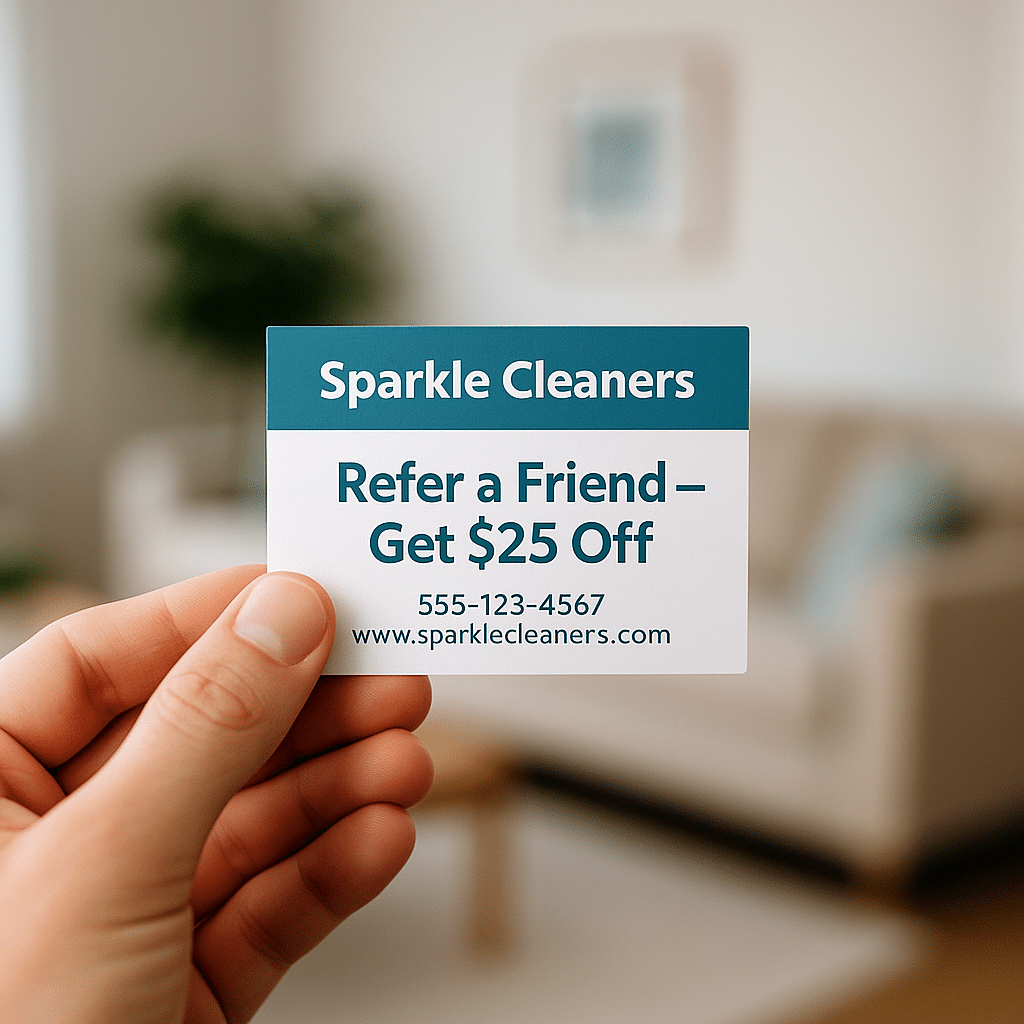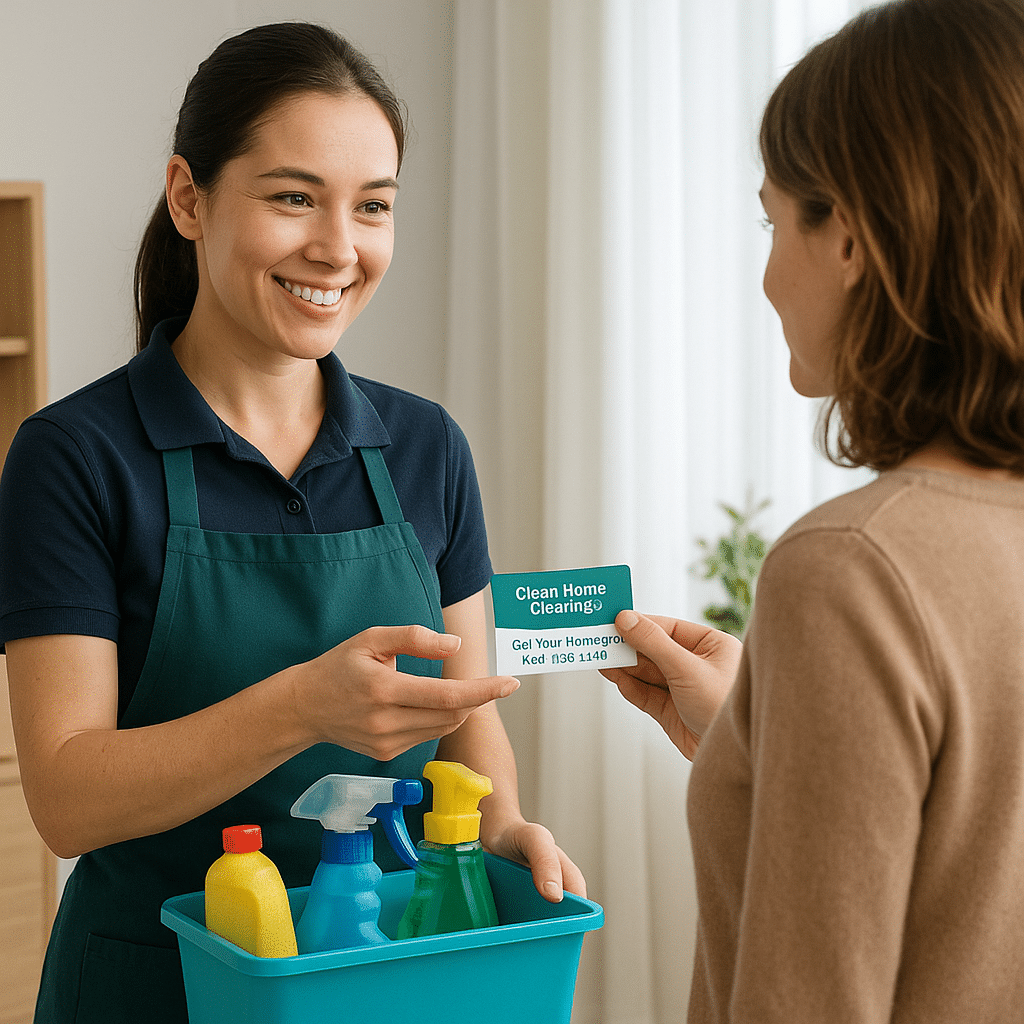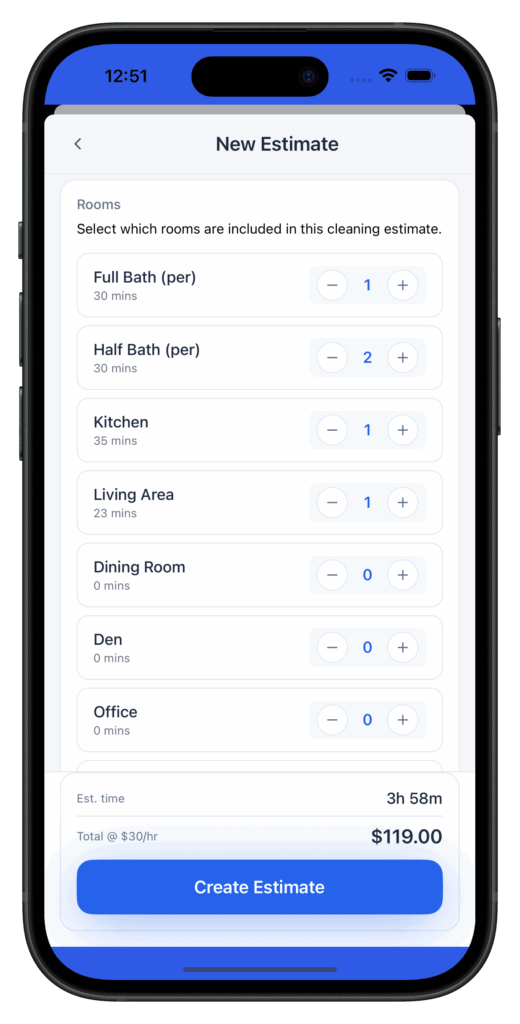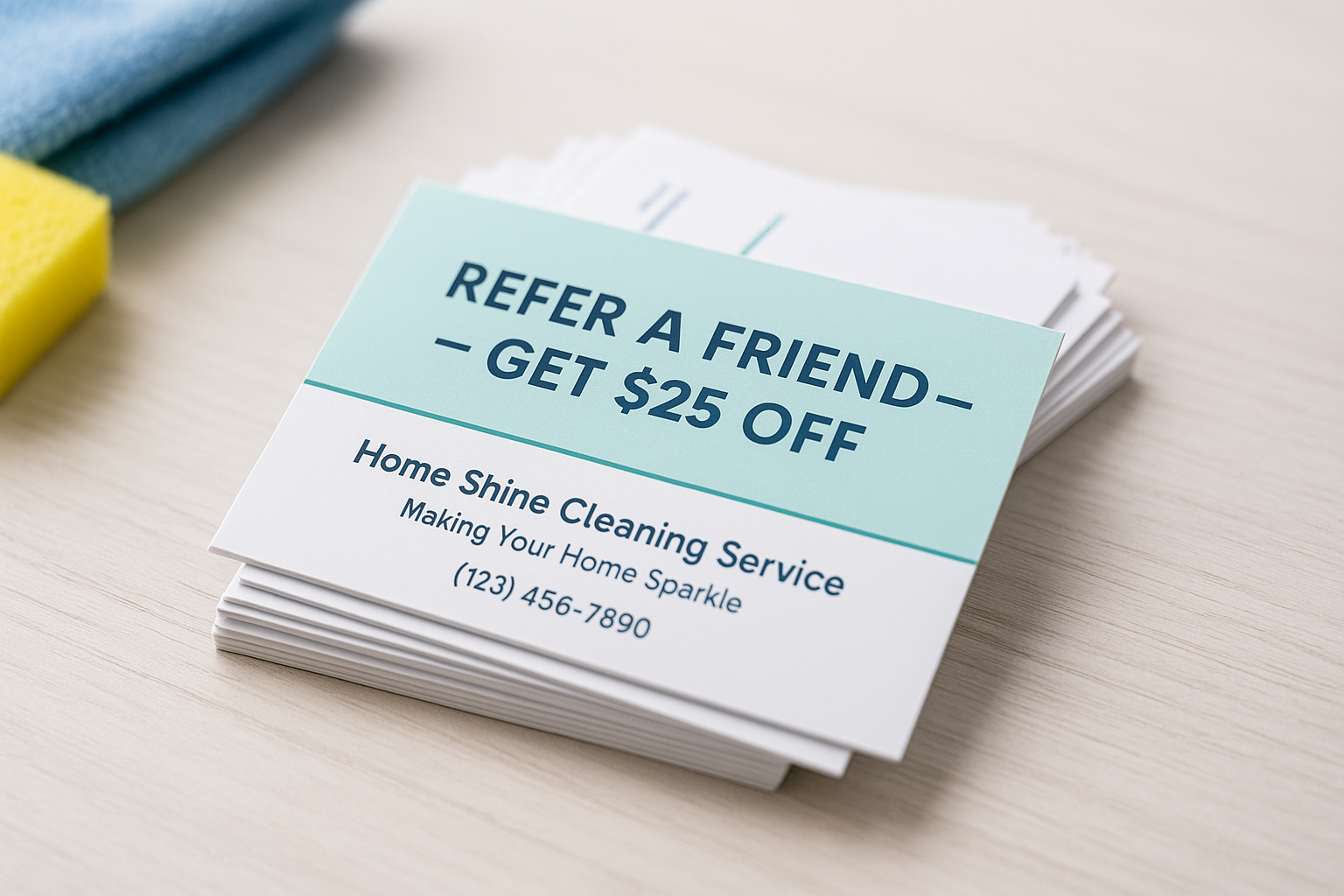Your Card Isn’t Just a Card — It’s an Offer
Most cleaning business owners think a business card is simply a piece of paper. It’s not.
A business card is a tiny sales letter that either sits forgotten in a junk drawer—or drives referrals and revenue on autopilot.
If your card doesn’t trigger action, it’s not a business card. It’s a waste of money.
Let’s build one that makes people call you, trust you, and refer you.

Why Business Cards Still Matter
Even in a digital world, business cards still work for cleaning businesses. Here’s why:
- Trust is physical. A tangible card signals legitimacy. Especially in local services where strangers enter homes, physical branding builds comfort.
- Referrals happen in conversations. Clients chat with neighbors or coworkers about cleaning. A physical card makes it easy for them to pass your info along.
- Digital noise is crowded. While everyone floods social media, a business card stands out because few businesses design one well.
A study by Statistic Brain found that 72% of people judge a company’s credibility based on their business card’s quality. Yet many cleaners hand out flimsy, cluttered cards printed at the cheapest shop they can find.
Elements of a Referral-Generating Cleaning Business Card
If you’re a solo cleaner or running a small team, you’re not competing on ad spend. You’re competing on trust and memorability.
Your business card needs these elements:
1. A Clear, Bold Value Proposition
Don’t just put “Jane’s Cleaning Services” in fancy script. State exactly what problem you solve or what makes you different.
Instead of:
“Sparkle Cleaners – Licensed & Insured”
Try:
“We Guarantee Your Home Will Be Cleaner Than Ever — Or We Clean Again Free.”
The second example is an offer. The first is just a name.
2. An Irresistible Offer
Your card should make people act. Strong examples:
- Referral reward
“$25 off your next cleaning for every friend you refer.” - First-time discount
“New clients: Save 20% on your first clean.” - Satisfaction guarantee
“If you’re not thrilled, we clean again free.”
This turns your card into a lead generator instead of a passive piece of paper.
3. Visual Simplicity

Your card should be clean and easy to read. Avoid:
- Tiny fonts
- Script text
- Busy backgrounds
- Overstuffed layouts
White space makes a card feel modern and professional.
4. QR Codes for Quick Action
QR codes exploded in popularity since 2020. Put one on your card leading to:
- Your website
- A booking page
- A referral form
- Customer testimonials
Tip: Make sure the QR code lands on a mobile-optimized page.
5. Contact Details That Matter
At minimum, include:
- Phone number
- Website
- Service area (especially for local businesses)
- License/insurance note (if required in your state)
Don’t overload your card with every social media handle unless those platforms actually generate clients for you.
Advanced Design Strategies: Make Your Card a Sales Machine
Use Both Sides
The front can be brand-focused. The back can carry your offer.
Front:
“Home Sparkle Pro Cleaning”
“We Make Your Home Feel Brand New.”
Back:
“Refer a friend, get $25 off your next clean. Call or scan the code.”
Incorporate Emotional Language
Don’t just say you clean well. Say:
“Come home to a place that feels brand new.”
“Enjoy weekends without worrying about chores.”
People buy feelings, not just services.
Match Your Card to Your Market
If you target higher-end clients, your card should feel premium:
- Thicker paper stock
- Matte finish
- Elegant, minimal design
For middle-income neighborhoods, a bright, cheerful card with clear deals might perform better.
Your card should “speak the language” of your clients.
Distribution Strategies That Actually Work

A great business card sitting in your glove compartment earns zero revenue. Distribution is where many cleaners fall short.
Here’s how to get your cards into the right hands:
1. Ask Every Client for Referrals
Few cleaners do this systematically. Try saying:
“By the way, if you know anyone who’d love a sparkling clean house, I’d love to help. Here’s a couple of cards you can give them—and you’ll get $25 off for each referral.”
Train yourself or your team to say this at the end of every job.
2. Leave Cards in Strategic Places
Look for:
- Coffee shop community boards
- Hair and nail salons
- Gyms
- Dog groomers
- Daycare centers
- Real estate offices
Always check local regulations before posting cards.
3. Partner With Other Businesses
Consider partnerships with:
- Realtors
- Carpet cleaners
- Window washers
- Professional organizers
Offer to display each other’s cards. Realtors, in particular, are strong sources of new cleaning leads.
4. Tuck Cards Into Leave-Behinds
Include a business card with:
- A thank-you note
- A fridge magnet
- A printed invoice
Clients are far likelier to keep cards tied to a positive experience.
5. Mail Cards to Past Clients
If you haven’t heard from past clients in months, send a handwritten note:
“Hi Sarah, just checking in. Here’s a card for a friend who might need help keeping their home fresh. You’ll both save $25 if they book.”
Direct mail often cuts through digital clutter.
Tracking Your Card’s ROI
Every marketing tool is an investment, not an expense. Business cards are no different.
- Track which clients come via referral cards
- Measure how many cards you distribute monthly
- Calculate revenue from referral cards vs. printing cost
Even a simple spreadsheet can show whether your cards are producing profit—or just cluttering your wallet.
ROI Focus: Business Cards as Revenue Drivers
The goal isn’t pretty cards. It’s sales.
A $300 run of cards that lands one recurring $150/week client pays itself back in two weeks. Everything after that is profit.
Business cards aren’t marketing fluff (although they can be). They’re revenue-generating assets when designed and distributed strategically.
Final Thoughts
Your business card is a silent salesperson. Done poorly, it’s a wasted expense. Done well, it creates referrals, trust, and new revenue.
Design yours like an offer, distribute it intentionally, and track the results. That’s how cleaning businesses—solo or small teams—build reliable client pipelines without huge ad budgets.



